After St. Patrick's decided to send the seminarians home for the COVID-19 crisis, we identified a need for library book scanner to support our remote learning plans. Within only one hour of the decision, a generous donor agreed to cover a portion of the total cost with the remainder coming from some restricted library funds. At the same time, Matt Horwitz, our library director, had asked for reviews from other library directors around the country and received several positive recommendations on the KIC Bookeye 4, a member of the Knowledge Imaging Center (KIC) family of self-serve digitization kiosks.
We quickly received a web demonstration from the manufacturer. Having seen the scanner in action, we decided to make the purchase. The device's user interface permits one to do a number of things on the scanner setup that previously needed to be done on the computer. One can "compose" scanned images--crop, rotate, add text to, and otherwise manipulate them--on the interface before sending them to oneself. The interface also includes options to produce a searchable PDF using optical character recognition (OCR), or to convert the text into a sound file using text-to-speech (TTS).
Additionally, the scanner setup affords one a number of options for sending scanned documents to oneself or others: documents can be not only sent out via email, but also saved directly onto a flash drive, uploaded to various cloud storage services (e.g., Google Drive), or sent to one's smartphone. Speaking of smartphones, there is a free app that one can download onto one's phone that interacts with the scanner in a number of ways: turning the text of the document into speed-reading exercises, reading the text aloud while one reads it simultaneously on one's phone, and facilitating the creation of flashcards from the material.
Finally, the interface offers assistance to the new user in ways that our old scanners do not. When the device is not otherwise in use, a display monitor continuously runs a tutorial on how to begin using the scanner; the various features on the device also come with "help" buttons attached. It should, then, be useable by just about anyone, even those who don't consider themselves tech-savvy.
This investment will help the seminary with its current distance learning program while the students and faculty are off-campus. Long-term, it will allow us to better share popular books needed for research and enhance our capability with the interlibrary loan process.
Thank you to our donors for their ongoing support of our efforts. Please see the video below for a demonstration of the scanner.
